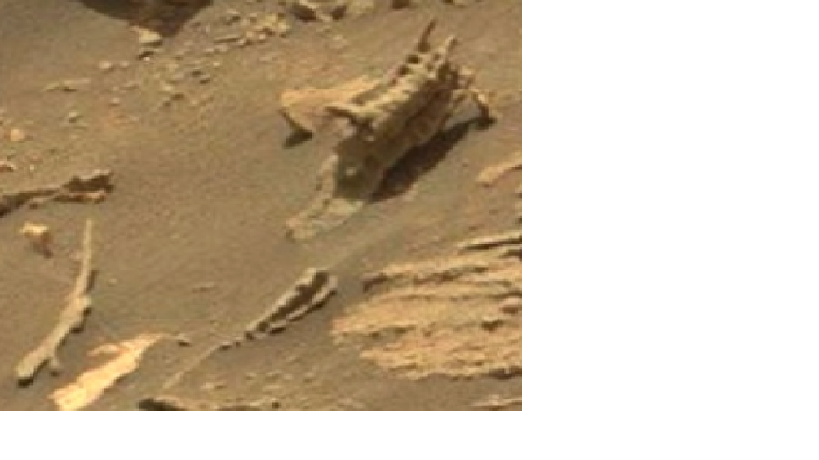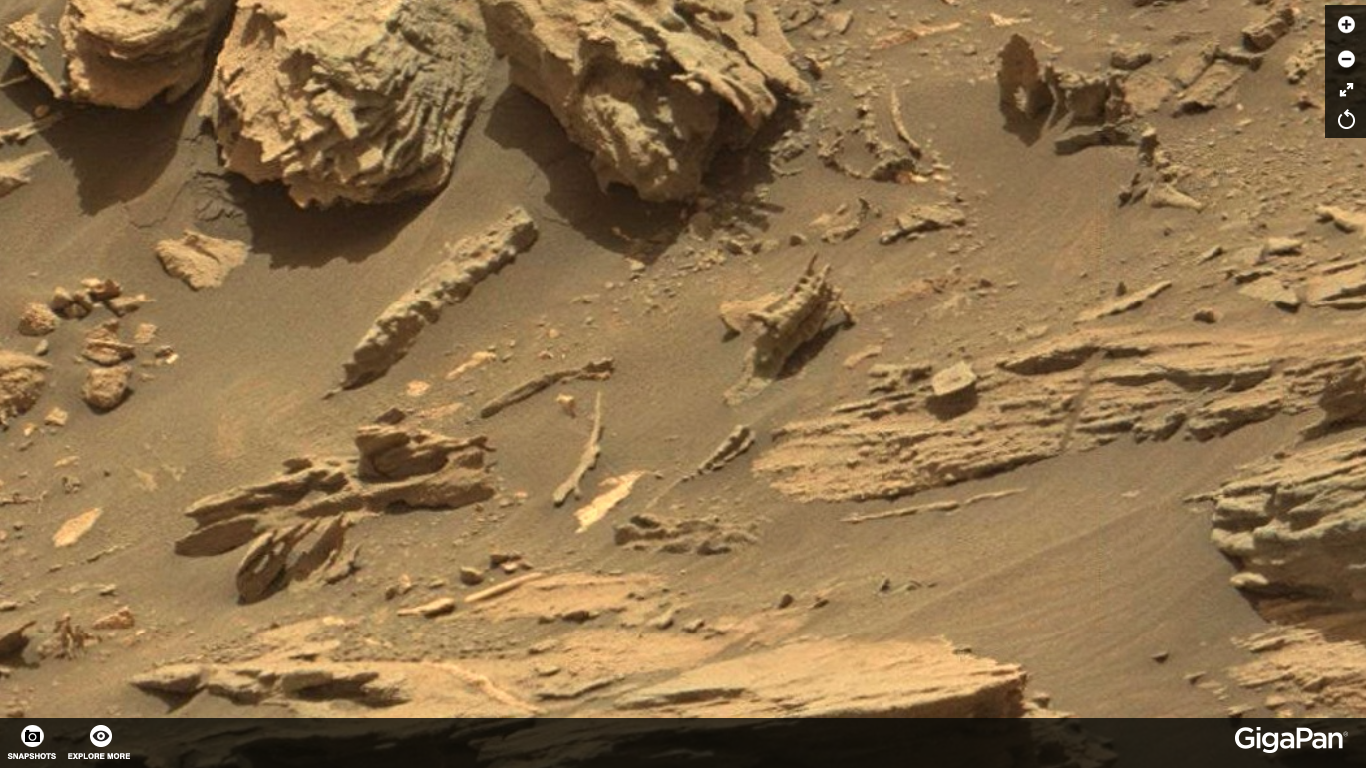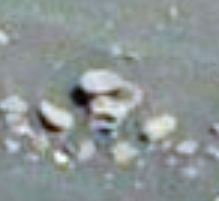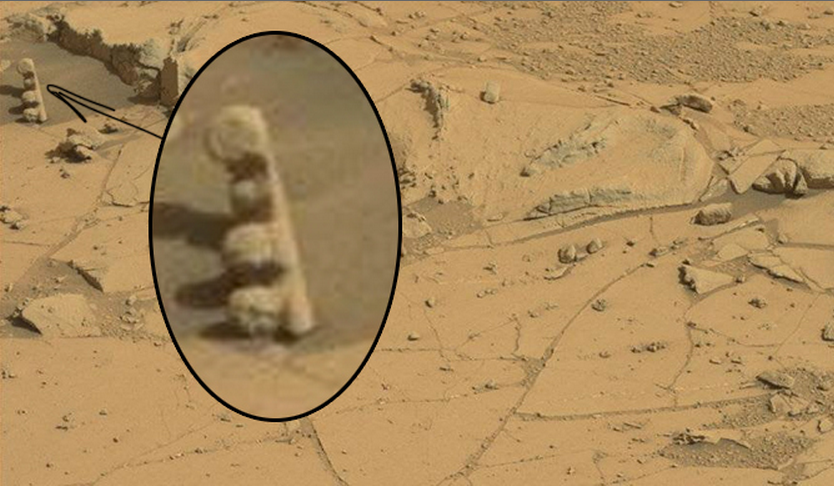It looks like you're using an Ad Blocker.
Please white-list or disable AboveTopSecret.com in your ad-blocking tool.
Thank you.
Some features of ATS will be disabled while you continue to use an ad-blocker.
share:
star! looks like a boneyard to me lol, off topic i'd do a one way mars trip, i'm old enough now, raised my kids, wouldn't frighten me, you gotta die somewhere and sometime. i'd be disappointed if all i could write was "it's a rock" haha, i'd want alien artifacts n stuff.
originally posted by: Jonjonj
My favourite is still this one, I'd definitely appreciate an explanation.
I found this about 2015-16? I can't remember now.
Taken from this crop:
Stuff I'd like explained really.
edit on
5-2-2019 by SerenTheUniverse because: quote tags fail
The rover is finally getting around to some more interesting rock formations. Here's one from the Chem Cam that looks like somebody forgot to pick up
after their dog:
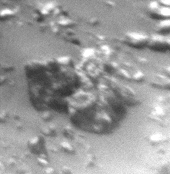
mars.jpl.nasa.gov...
I like spirals. Those are hard for the wind to create. There are some other interesting rocks in that area, too.

mars.jpl.nasa.gov...
I like spirals. Those are hard for the wind to create. There are some other interesting rocks in that area, too.
Not really an interesting rock, but I thought it was a nice shot by the rover.

mars.jpl.nasa.gov...

mars.jpl.nasa.gov...
edit on 29-3-2019 by Blue Shift because: (no reason
given)
Here's what happens when you leave your iPad out on the surface of Mars for a few thousand years:
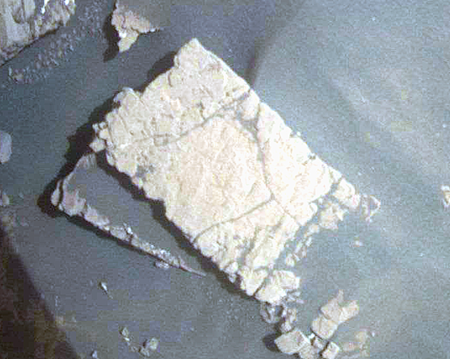
mars.jpl.nasa.gov...

mars.jpl.nasa.gov...
Tubular features. Funny little "C" rock to the left.

mars.jpl.nasa.gov...
Broken wrench:
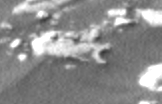
mars.jpl.nasa.gov...

mars.jpl.nasa.gov...
Broken wrench:

mars.jpl.nasa.gov...
edit on
3-4-2019 by Blue Shift because: (no reason given)
This is very tiny. But it looks like a little segmented worm. It would be nice if there were others around just like it, but there doesn't seem to
be any.
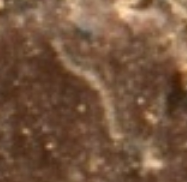
mars.nasa.gov...

mars.nasa.gov...
edit on 4-4-2019 by Blue Shift because: (no reason
given)
You wouldn't think so, but this is pretty much exactly what I would imagine life (or what remained of it) would look like on Mars. Just a leftover
stain of lichen or something like that. I could be wrong.
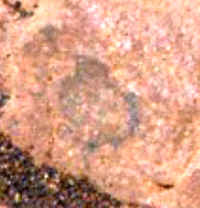
mars.nasa.gov...

mars.nasa.gov...
This is the kind of stuff that people see that makes them think there are artifacts in this area.
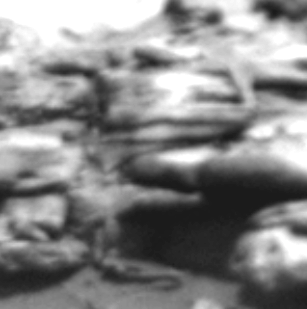
mars.nasa.gov...
The image is taken from the Chem Cam, and is not great. The Mast Cam is taking pictures of garbage these days. The Hand Lens Imager hasn't uploaded an image in quite a while. If I was a conspiracy guy, I'd think they were purposely trying not to let anybody get a closer look, now that they're getting to some good stuff. Or maybe the rover has lived way past its prime, and it's a wonder that it works at all.

mars.nasa.gov...
The image is taken from the Chem Cam, and is not great. The Mast Cam is taking pictures of garbage these days. The Hand Lens Imager hasn't uploaded an image in quite a while. If I was a conspiracy guy, I'd think they were purposely trying not to let anybody get a closer look, now that they're getting to some good stuff. Or maybe the rover has lived way past its prime, and it's a wonder that it works at all.
I like these little balls of junk. I'm not sure how they manage to stick together, but they have some interesting shapes in them that look like roots
or coral or something else. This one is pretty small.
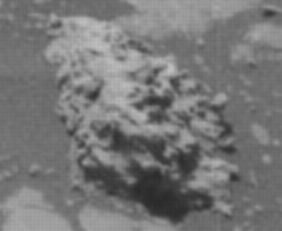
mars.nasa.gov...

mars.nasa.gov...
Nice evenly-spaced layers, kind of out of place in the middle of the river bed:
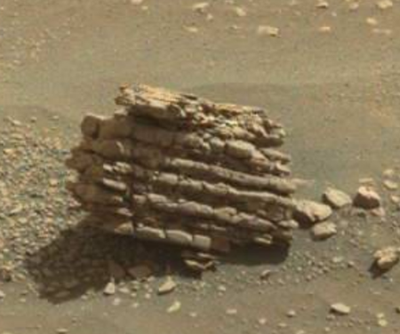
But I wonder what happened to the top layer to make it so obviously different, with all the odd colors and crazy details and little "tendrils" to boot.

mars.nasa.gov...

But I wonder what happened to the top layer to make it so obviously different, with all the odd colors and crazy details and little "tendrils" to boot.

mars.nasa.gov...
You might find the most recent MAHLI uploads interesting.
mars.jpl.nasa.gov...
Check the darker, somewhat segmented, rock, in the top right of this image.
The whole image has some interesting features, but that darker looking rock has characteristics I would look for, and is reminiscent of segmented arthropods, or potentially a vertebrae like structure.
mars.jpl.nasa.gov...
Check the darker, somewhat segmented, rock, in the top right of this image.
The whole image has some interesting features, but that darker looking rock has characteristics I would look for, and is reminiscent of segmented arthropods, or potentially a vertebrae like structure.
After reviewing more of the recent MAHLI images, I am less confident in the assertions of my post.
As observation improves with more data, perspectives need to be adjusted to match the evidence.
Thus, I have no problem retracting myself. The darker appearance may be caused by something simple and not organic related, and the ridge banding is a common appearance in the rocks of the area. At best it's just very compelling evidence that some kind of liquid flowed there at some point.
Not much less interesting, still pretty cool.
As observation improves with more data, perspectives need to be adjusted to match the evidence.
Thus, I have no problem retracting myself. The darker appearance may be caused by something simple and not organic related, and the ridge banding is a common appearance in the rocks of the area. At best it's just very compelling evidence that some kind of liquid flowed there at some point.
Not much less interesting, still pretty cool.
originally posted by: Archivalist
As observation improves with more data, perspectives need to be adjusted to match the evidence.
As it should. Since we're not actually there and can't pick up these rocks and brush them off (or lick them like a good rock hound) these are just observations based on available imagery. Sometimes the rover will provide a better close-up and suddenly they don't look so unusual.
That's why I can't really say for sure that such and such is for sure a fossil or artifact or whatever. It's just interesting within the context of the rest of the stuff lying around up there.
There are a couple of things that keep cropping up that makes me wonder, particularly as they have to do with layers. For one, where the hell did all the calcium come from that it dropped a layer that seeped into these cracks? Secondly, what made the cracks and tossed everything around so much? Third, why does it seem that the more complex-looking rocks the ones that so often look like artifacts or fossils, are more often found in the uppermost layers?
Seems to me if the planet was much wetter in the past and then dried up, then the more complex stuff should be in the lower layers. But as it is, what looks like what happened is that the planet had periodic warming, possibly accompanied by water and the creation of complex mud balls, interspersed with periods of devastation. And one of those periods of wetness was not all that long ago, since it's in upper layers.
I don't know if any catastrophists have looked at Mars that way, but I think it suggests that Mars is subject to the same kind of periodic upheavals that the Earth is exposed to, and maybe even at the same times. Decreased sunspot activity causing widespread freezing. Periodic asteroid / meteor swarm impacts. And so on. I guess NASA / JPL is still working on constructing a planetary geological timeline but don't have a definitive one yet.
originally posted by: bluemooone2
NASA’s Curiosity Rover found these.
I've got years worth of images of odd formations that look unusual. Here's an oldie but a goodie:

Here's its fossilized brother:
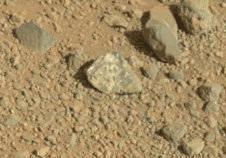
edit on 4-6-2019 by Blue Shift because: (no reason given)
Tree stump or something, I guess:

mars.jpl.nasa.gov...
Funny how the left Mastcam didn't get it in that image, but got it in this one (very small):
mars.jpl.nasa.gov...

mars.jpl.nasa.gov...
Funny how the left Mastcam didn't get it in that image, but got it in this one (very small):
mars.jpl.nasa.gov...
I don't know what they're doing with this little rock. Are they scratching grooves in it, or were they already there? Interesting angles.
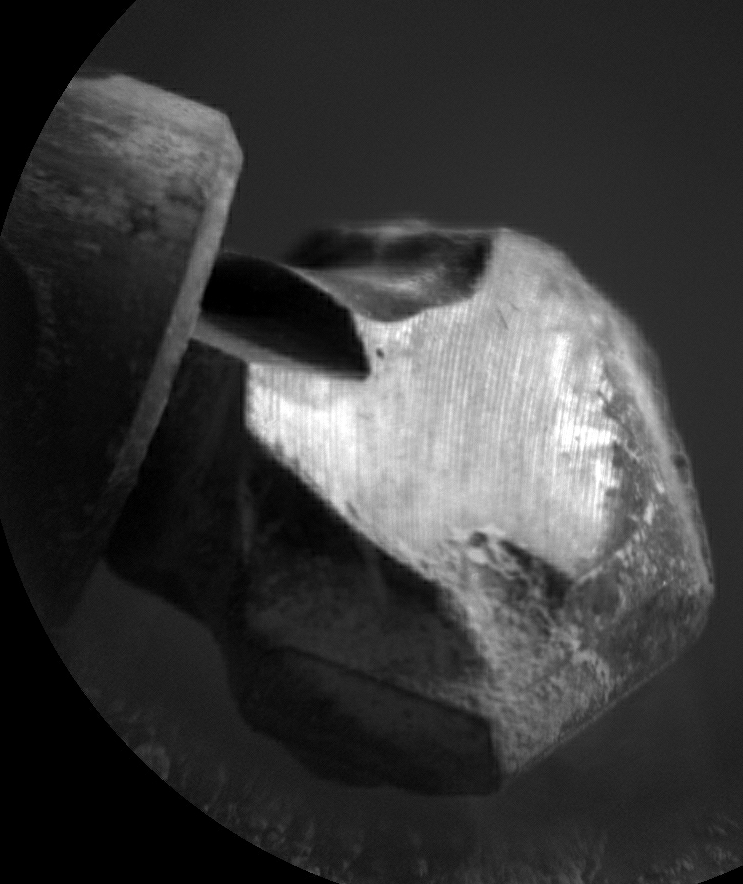
Edit:. Oh I see. That's not a rock that's the beaten up drill bit. Hah.

Edit:. Oh I see. That's not a rock that's the beaten up drill bit. Hah.
edit on 20-7-2019 by Blue Shift because: (no reason given)
new topics
-
Little Johnny and Larry should team up
General Chit Chat: 1 hours ago -
Will Us use alien technology to fight in ww3?
World War Three: 1 hours ago -
posted in wrong forum
Aliens and UFOs: 2 hours ago -
Shane Gillis commercial
Jokes, Puns, & Pranks: 8 hours ago -
Elon Says It’s ‘Likely’ He Buys Tanking MSNBC
Political Ideology: 10 hours ago -
Montelukast affects brain, caused 5 year old to attempt suicide
Medical Issues & Conspiracies: 11 hours ago
top topics
-
Elon Says It’s ‘Likely’ He Buys Tanking MSNBC
Political Ideology: 10 hours ago, 16 flags -
Montelukast affects brain, caused 5 year old to attempt suicide
Medical Issues & Conspiracies: 11 hours ago, 15 flags -
Jaguar Rebrand Video Causes "WTF?" Moment - Seriously Weird
Automotive Discussion: 13 hours ago, 14 flags -
What Joe Rogan said Vs The View
Dissecting Disinformation: 16 hours ago, 13 flags -
Shane Gillis commercial
Jokes, Puns, & Pranks: 8 hours ago, 4 flags -
Let's start a conspiracy
General Conspiracies: 14 hours ago, 1 flags -
posted in wrong forum
Aliens and UFOs: 2 hours ago, 0 flags -
Will Us use alien technology to fight in ww3?
World War Three: 1 hours ago, 0 flags -
Little Johnny and Larry should team up
General Chit Chat: 1 hours ago, 0 flags
active topics
-
Jaguar Rebrand Video Causes "WTF?" Moment - Seriously Weird
Automotive Discussion • 17 • : angelchemuel -
What Joe Rogan said Vs The View
Dissecting Disinformation • 22 • : TheMisguidedAngel -
Will Us use alien technology to fight in ww3?
World War Three • 1 • : atsalex2 -
Little Johnny and Larry should team up
General Chit Chat • 0 • : 727Sky -
Elon Says It’s ‘Likely’ He Buys Tanking MSNBC
Political Ideology • 72 • : nugget1 -
posted in wrong forum
Aliens and UFOs • 0 • : wrayth -
Montelukast affects brain, caused 5 year old to attempt suicide
Medical Issues & Conspiracies • 9 • : Daughter2v2 -
Well we know Putins ICBMs won't fail in their silos
World War Three • 174 • : 777Vader -
President-Elect DONALD TRUMP's 2nd-Term Administration Takes Shape.
Political Ideology • 234 • : WeMustCare -
-@TH3WH17ERABB17- -Q- ---TIME TO SHOW THE WORLD--- -Part- --44--
Dissecting Disinformation • 3352 • : Crazierfox

